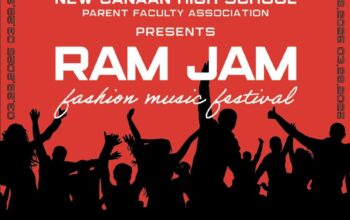Olivia Flaherty-Lovy, Reporter
@ofl_courant
Since the Sandy Hook Massacre on December 14, 2012, there have been at least 239 school shootings across the nation that have resulted in the deaths of at least 138 people, according to the New York Times. On February 14th, 2018, 15 high school students and 2 adults lost their lives when a 19 year old in Parkland, Florida took a gun to the halls of his former high school, Marjory Stoneman Douglas.
Already, in the month after the incident, students from Parkland have appeared on talk shows, initiated a nationwide school walkout and protest, and have even met with politicians like Senator Marco Rubio and President Donald Trump to discuss what steps they feel should be taken to ensure that events like these don’t repeat themselves.
There is no doubt that the response to the shooting in Parkland has been different than the responses to previous shootings— monumentally different. The question is, why?
One of the most popular theories about why the country reacted to this shooting on such a giant scale is because the people most directly affected were young adults. One of the leaders of the NCHS walkout, junior Emily Shizari said, “I think the response has been so prominent because the people who attend Marjory Stoneman Douglas High School are teenagers who this is directly affecting and who are speaking up and taking action.”

The response to the Parkland shooting is often compared to that of the Sandy Hook Massacre, where 26 students and adults were murdered at an elementary school in Newtown, Connecticut. Since the students killed at Sandy Hook were all between six and seven years old, the adults of the community were the leaders in organizing the response. However, the shooting in Parkland targeted and most directly affected students between the ages of 14 and 18, who are proving that they are old enough and educated enough to step up and create change themselves. Their leading tool in creating this change? Social media.
Because the victims in Parkland were teachers and teenagers, their peers were mostly experts at social media, and if not already adept at using it, they learned fast. Teacher Jessica Browner said, “I think the response to Parkland has been so big because it’s the students who have taken control of the narrative. In terms of deflecting criticism and capitalizing on the reach of social media, the students have shown they’ve got serious game.”
Take, for example, Parkland survivor Emma Gonzalez, who created a Twitter account after the shooting to spread the word about the tragedy that her school experienced. She now has over 1.25 million Twitter followers who are constantly exposed to her messages on what she thinks should be done to prevent mass shootings moving forward.

Gonzalez, however, is not alone in her quest to spread the word through social media. Students from Parkland launched a social media campaign to keep their school in the news and pressure Congress to act on gun control measures by encouraging people to create and share their videos using the hashtags “What if” and “Never Again.”
Since then, thousands of videos showing students participating in walkouts and advocating for change have populated Twitter, allowing the their message to reach millions of people. The Women’s March Youth Empower Group, the organization that formally planned the national student walkout, mainly used social media sites like Facebook, Instagram and Twitter to spread the word and encourage studens to join the protest.
The work and influence of these students has not gone unnoticed by major new In the March 7 edition of the New York Times, journalist Jonah Engel Bromwich writes, “ It has become obvious that many of the most well-known students at Stoneman Douglas in Parkland, Florida are adept at using memes, jokes and video clips, the students have managed to keep the tragedy that their school experienced — and their plan to stop such shootings from happening elsewhere — in the news for weeks, long after past mass shootings have faded from the headlines.”
Social media has given Parkland survivors an enormous platform to share their views and advocate for change, and that is exactly what students activists around the country have done. As junior Kate Reeves, one of the leaders of the NCHS school walkout, said, “The echo of youth voices across the country is what has made this event different. While we cannot vote, we can orchestrate the response of a country.”




